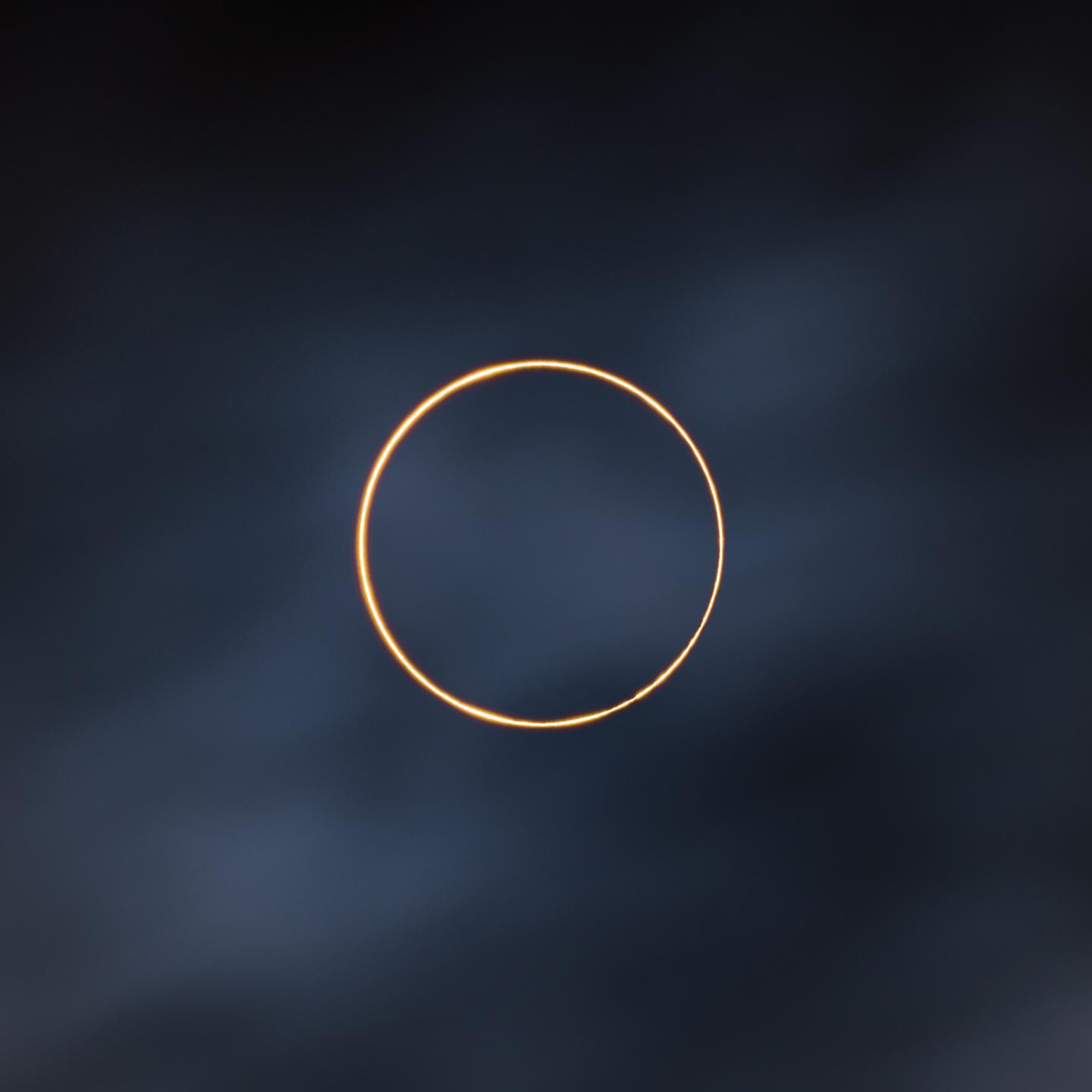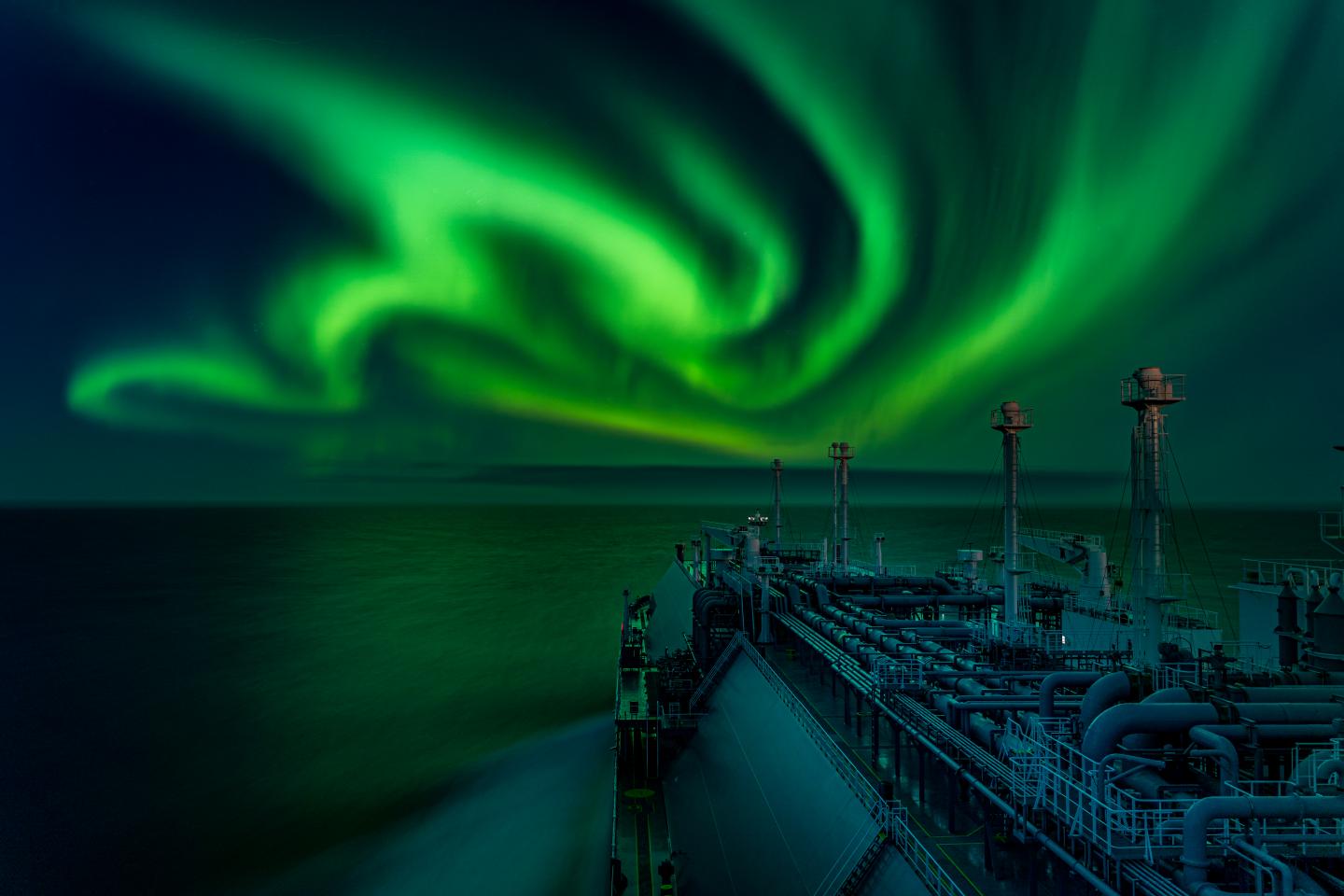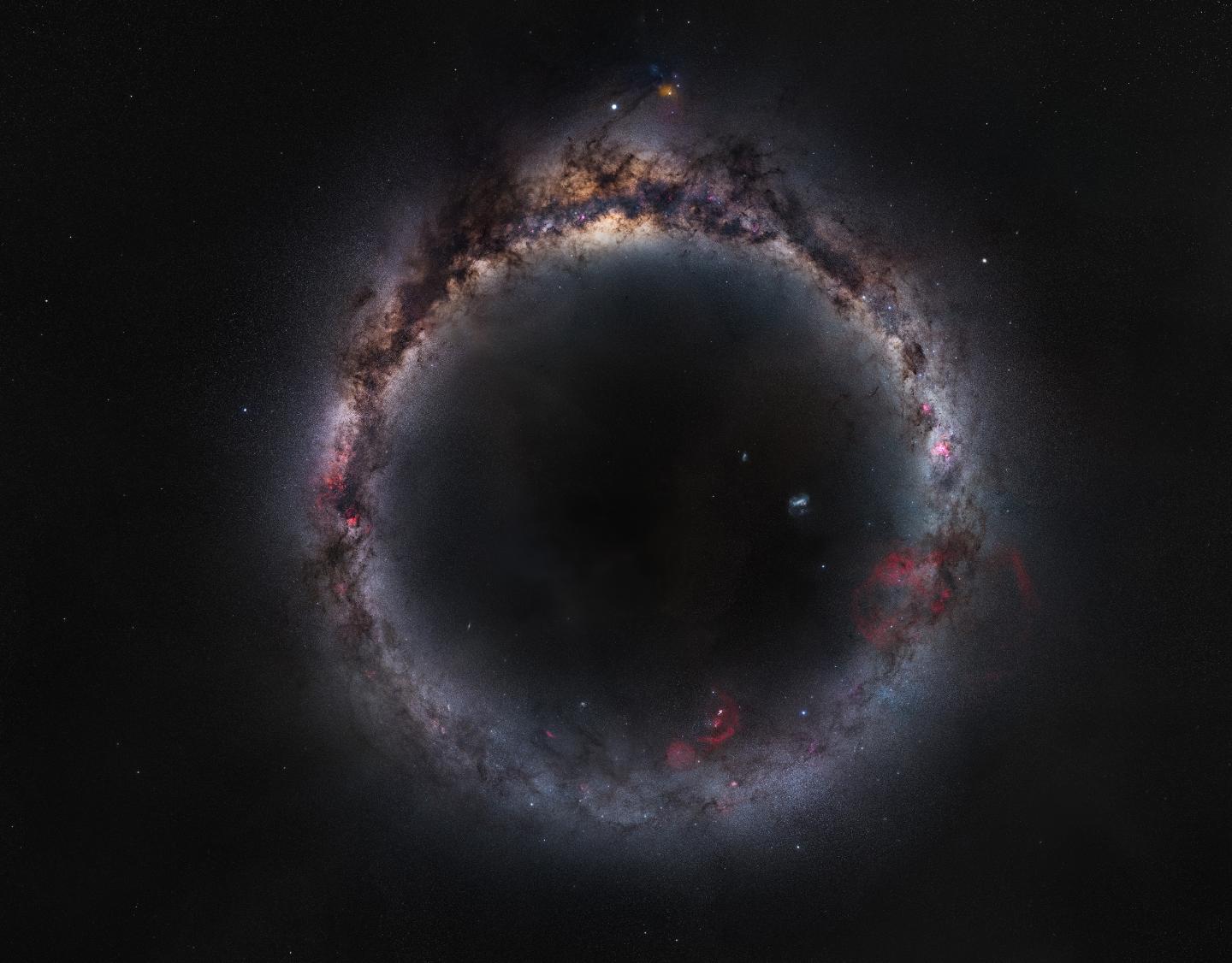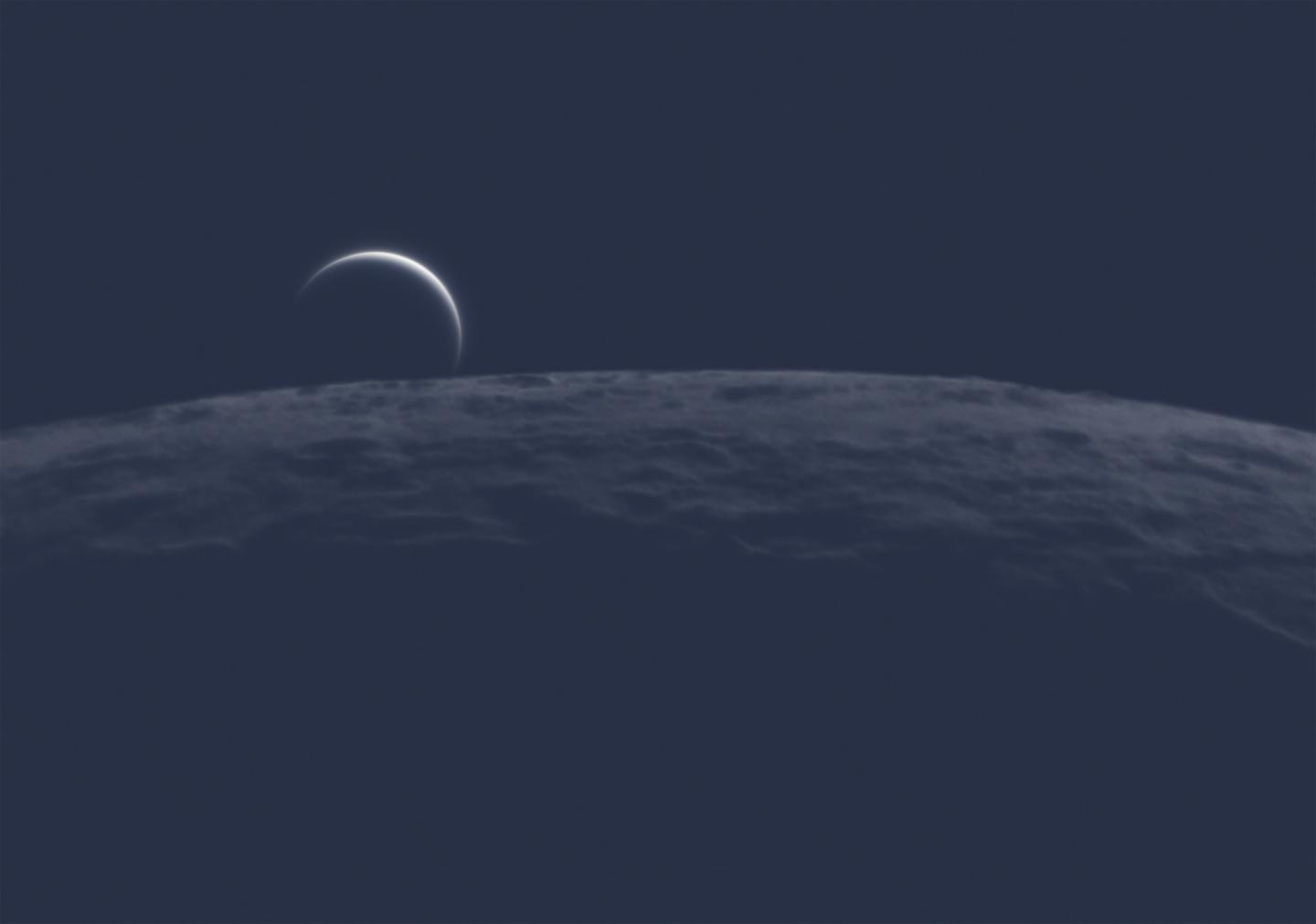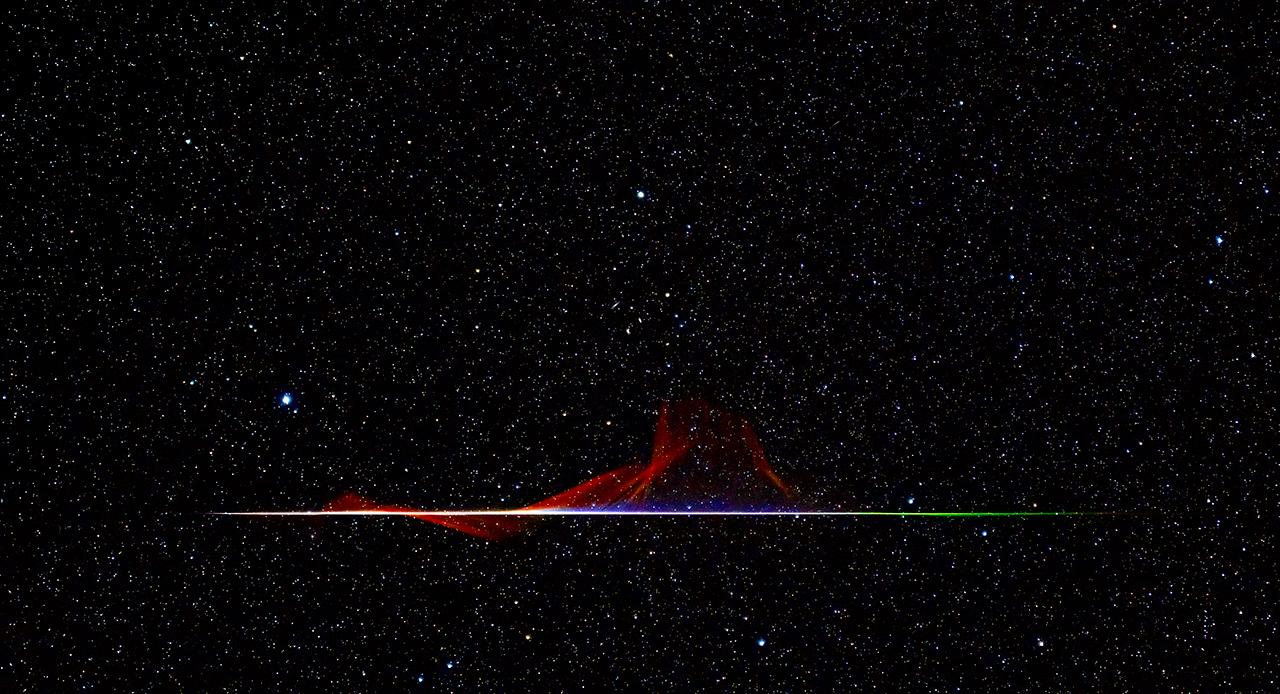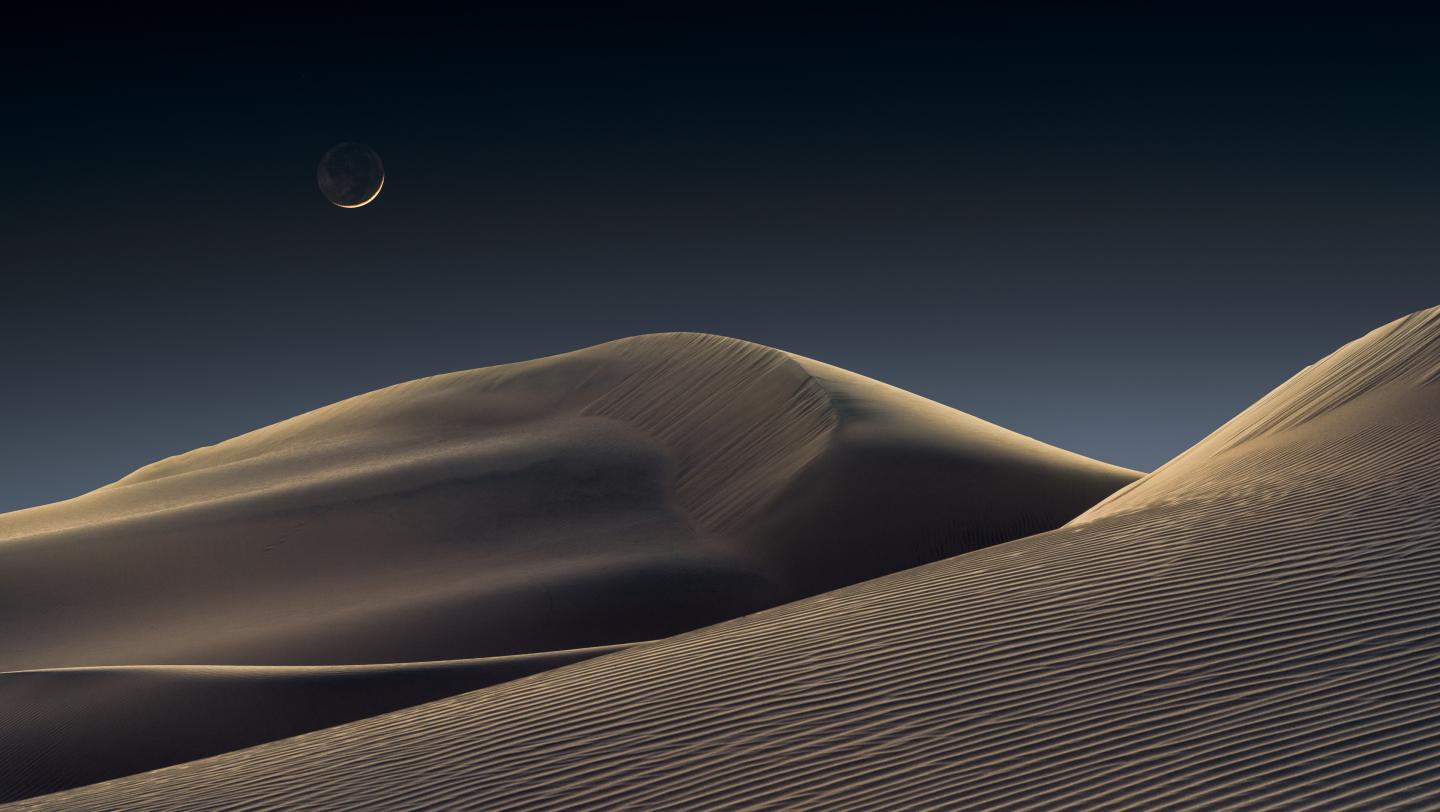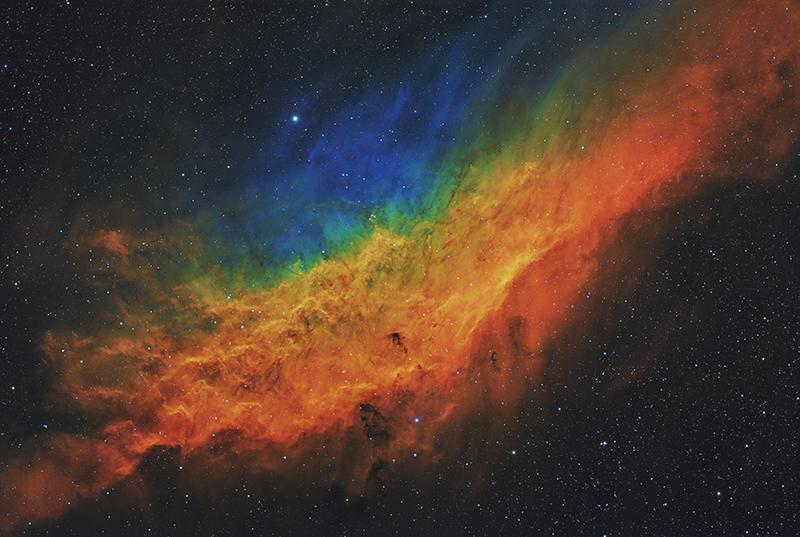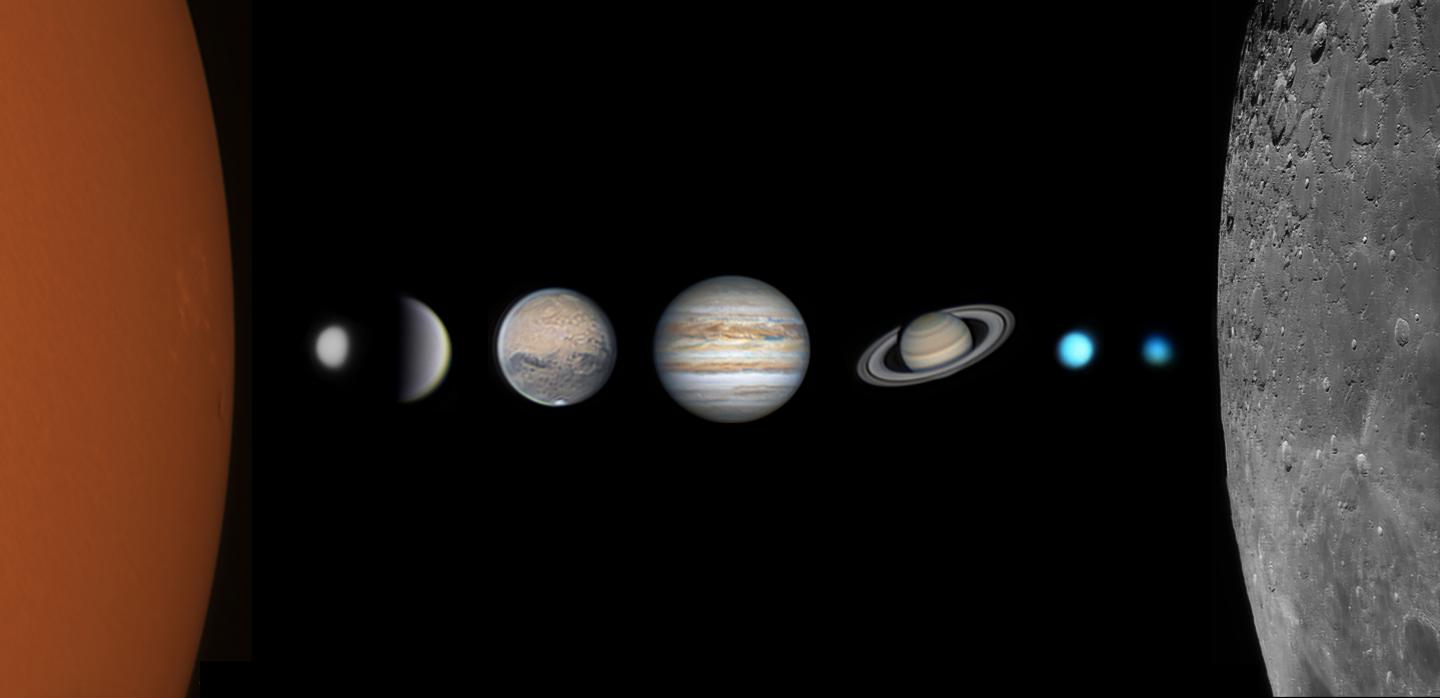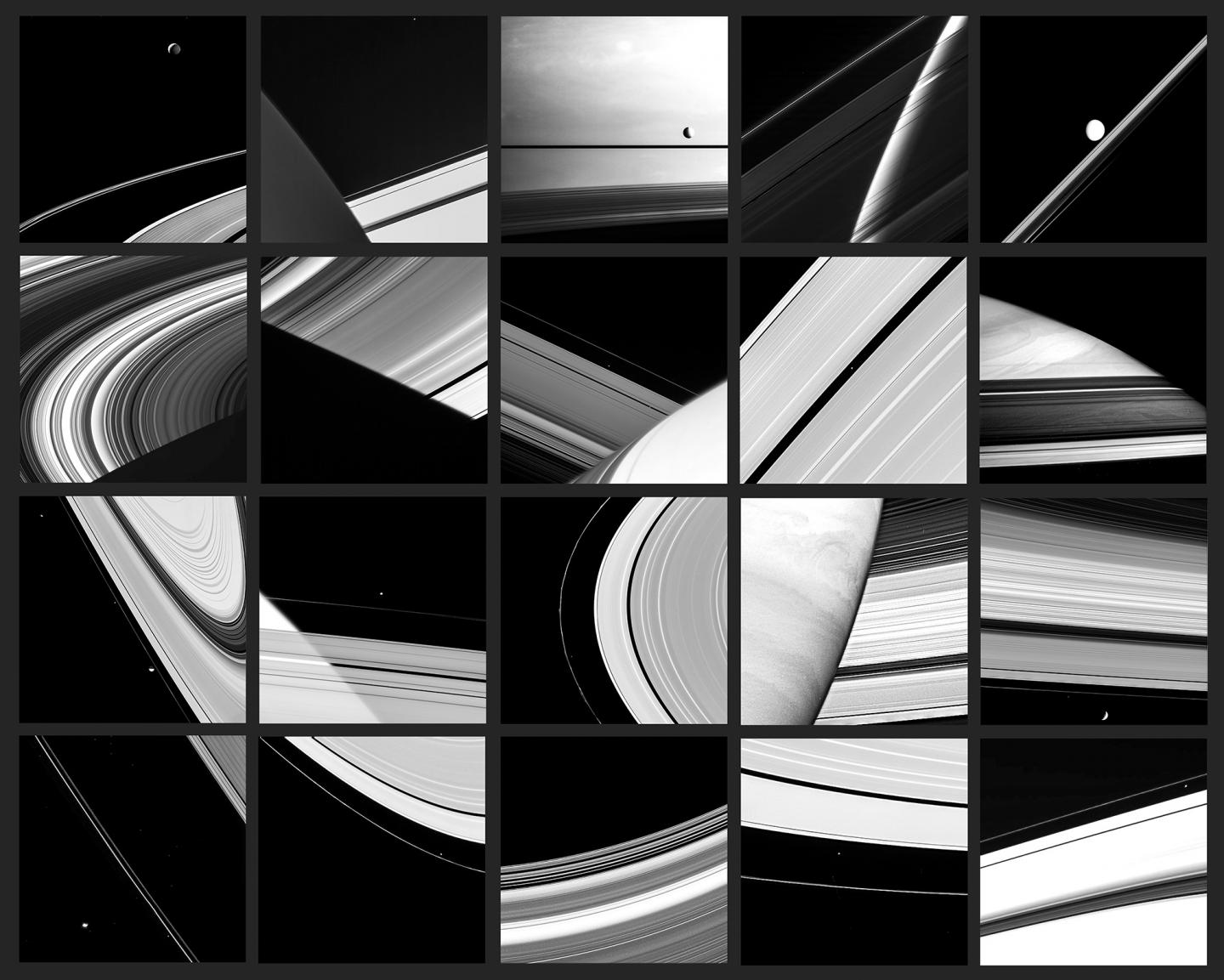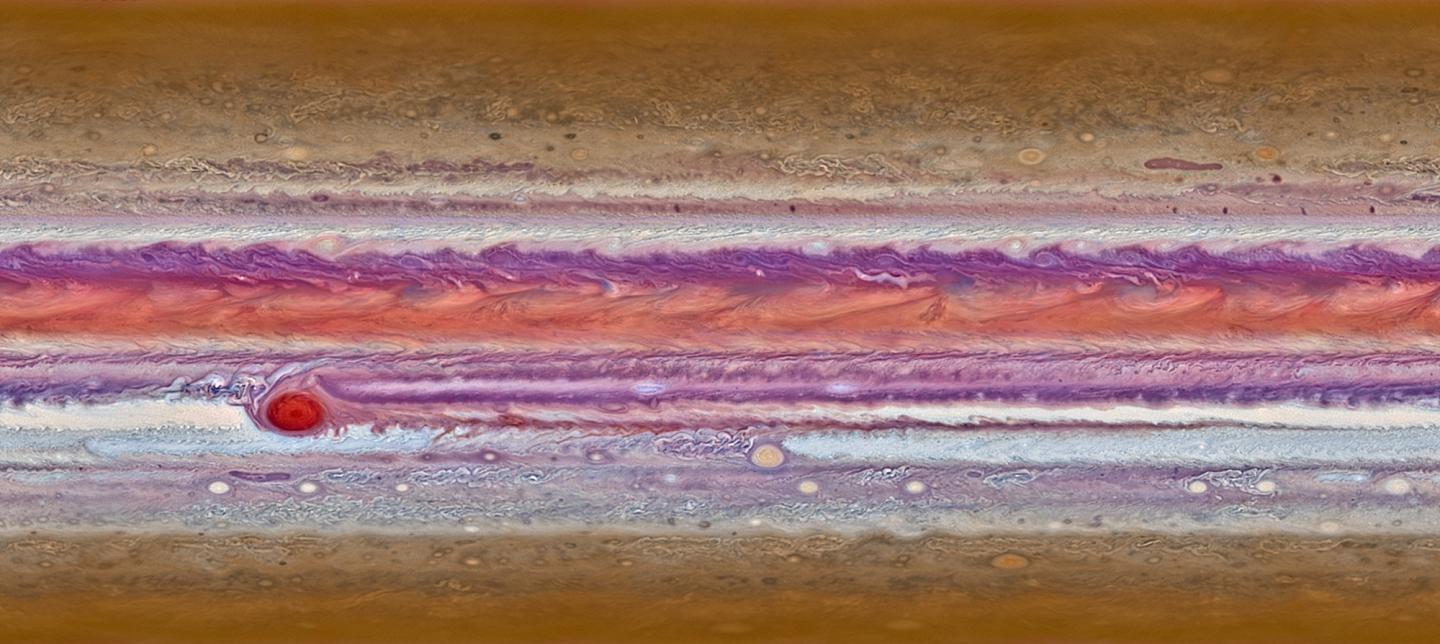Page 2 of 2
RMG: Astronomy Photographer of the Year 2021
Posted: Fri Sep 17, 2021 1:55 pm
by bystander
Re: Found Images: 2021 September
Posted: Sat Sep 18, 2021 10:13 pm
by starsurfer
NGC 1003
https://noirlab.edu/public/images/noirlab2101a/
Copyright: KPNO/NOIRLab/NSF/AURA
Processing: Travis Rector (University of Alaska Anchorage), Mahdi Zamani & Davide de Martin
Acknowledgment: PI: M T. Patterson (New Mexico State University)
Re: Found Images: 2021 September
Posted: Sat Sep 18, 2021 10:16 pm
by starsurfer
LBN 331
http://www.capella-observatory.com/Imag ... LBN331.htm
Copyright: Josef Pöpsel, Frank Sackenheim and Stefan Binnewies
ESO: La Silla Family Photo
Posted: Mon Sep 20, 2021 1:12 pm
by bystander
La Silla Family Photo
ESO Picture of the Week | 2021 Sep 20
In this Picture of the Week, taken by drone, you can see nearly all of the telescopes at ESO’s
La Silla Observatory snaking along the top of the 2400-metre saddle-shaped mountain and into the distance. One for the La Silla family album!
La Silla is located on the outskirts of Chile’s
Atacama Desert, far from human-made light pollution in an area famed for its dark, clear skies. It was ESO’s first observatory, inaugurated in 1969, and remains at the forefront of astronomy today, with around 300 scientific papers using observations from La Silla telescopes published every year.
The most prominent telescope in this image is the ESO
3.6-metre telescope, home to the world's foremost exoplanet hunting instrument: the High Accuracy Radial velocity Planet Searcher, or
HARPS. Thanks to the observations made with HARPS, astronomers have worked out that there are likely billions of rocky planets in the temperate zones around
red dwarfs in the Milky Way, worlds that could potentially be home to life outside the Solar System.
ESA: On Clusters and Constellations (ESO 520-21)
Posted: Mon Sep 20, 2021 1:29 pm
by bystander
On Clusters and Constellations
ESA Hubble Picture of the Week | 2021 Sep 20
Image Credit: ESA/Hubble and NASA, R. Cohen
This sparkling starfield, captured by the NASA/ESA Hubble Space Telescope’s Wide Field Camera 3 (
WFC3) and Advanced Camera for Surveys (
ACS), contains the
globular cluster ESO 520-21 (also known as
Palomar 6). A densely packed, roughly spherical collection of stars, it lies close to the centre of the Milky Way, where interstellar gas and dust absorb starlight and make observations more challenging.
This absorption by interstellar material affects some
wavelengths of light more than others, changing the colours of astronomical objects and causing them to appear redder than they actually are. Astronomers call this process “reddening”, and it makes determining the properties of globular clusters close to the galactic centre — such as ESO 520-21 — particularly difficult.
ESO 520-21 lies in the constellation
Ophiuchus, near the celestial equator.
Ophiuchus was one of the 48 constellations which appeared in the writings of the second-century Egyptian astronomer
Ptolemy, all of which are among the 88 constellations officially recognised by the International Astronomical Union today. Not all the constellations proposed by astronomers throughout history have survived, however — forgotten or obsolete constellations include
Felis (the Cat),
Rangifer (the Reindeer), and even
Officina Typographica (the Printer’s Workshop).
Re: Found Images: 2021 September
Posted: Mon Sep 20, 2021 10:43 pm
by starsurfer
Re: Found Images: 2021 September
Posted: Mon Sep 20, 2021 10:46 pm
by starsurfer
Christmas Tree Cluster (NGC 2264) region
https://www.astrobin.com/m3vbkg/
Copyright: David Cheng
Re: Found Images: 2021 September
Posted: Mon Sep 20, 2021 10:47 pm
by starsurfer
NGC 1579
https://www.astrobin.com/8mw4t7/
Copyright: Peter Folkesson
Re: Found Images: 2021 September
Posted: Mon Sep 20, 2021 10:51 pm
by starsurfer
Re: Found Images: 2021 September
Posted: Mon Sep 20, 2021 10:52 pm
by starsurfer
Re: Found Images: 2021 September
Posted: Sat Sep 25, 2021 9:50 pm
by starsurfer
NGC 2362
https://www.chart32.de/index.php/component/k2/item/392
Copyright: CHART32
Processing: Bernd Flach-Wilken
Re: Found Images: 2021 September
Posted: Sat Sep 25, 2021 9:54 pm
by starsurfer
Chamaeleon II
https://astrodonimaging.com/gallery/haast-eagle/
Copyright: Don Goldman
This area is also catalogued as Sandqvist 156.
ESO: Twilight Glow (APEX)
Posted: Mon Sep 27, 2021 2:13 pm
by bystander
Twilight Glow
ESO Picture of the Week | 2021 Sep 27
The low twilight Sun highlights the clouds hanging over the Chilean Atacama landscape in this Picture of the Week, bathing the scene in deep, fiery red light. The image is dominated by the
Purico Complex, a clump of volcanic mountains whose highest peak reaches a whopping 5703 metres in elevation! A single vehicle is visible on the remote road below, kicking up a stream of opaque dust in its wake, and towards the left of the image is a cluster of buildings...and a single antenna.
This is the ESO-operated Atacama Pathfinder Experiment (
APEX), one of the highest telescopes in the world. APEX is designed to work at submillimetre wavelengths between infrared light and radio waves, which are key to revealing some of the coldest, dustiest, and most distant objects in the Universe. Over the years, it has explored a wide range of astronomical phenomena, probing the wild early lives of today’s
most massive galaxies, studying
matter torn apart by a supermassive black hole, and
mapping the plane of the Milky Way.
Because submillimetre radiation from space is heavily absorbed by water vapour in the Earth's atmosphere, it is best to observe it from high altitudes — hence APEX’s location. The experiment can be found at an altitude of 5100 metres, up on the Chajnantor plateau in Chile’s
Atacama Desert. This desert is one of the driest places on Earth, and as such offers unsurpassed views of the cosmos. The site is also home to the Atacama Large Millimeter/submillimeter Array (
ALMA), the world's largest ground-based facility for observations in the millimetre/submillimetre regime. ALMA’s 66 high-precision antennas are not visible in this image; they are scattered across the plateau behind the photographer.
ESA: More than Meets the Eye (NGC 5728)
Posted: Mon Sep 27, 2021 2:24 pm
by bystander
More than Meets the Eye
ESA Hubble Picture of the Week | 2021 Sep 27
Meet
NGC 5728, a
spiral galaxy around 130 million light-years from Earth. This image was captured using Hubble’s Wide Field Camera 3 (
WFC3), which is extremely sensitive to
visible and
infrared light. Therefore, this image beautifully captures the regions of
NGC 5728 that are emitting visible and infrared light. However, there are many
other types of light that galaxies such as NGC 5728 can emit, which WFC3 cannot see.
In this image, NCG 5728 appears to be an elegant, luminous,
barred spiral galaxy. What this image does not show, however, is that NGC 5728 is also a monumentally energetic type of galaxy, known as a
Seyfert galaxy. This extremely energetic class of galaxies are powered by their active cores, which are known as active galactic nuclei (
AGNs). There are many different types of AGNs, and only some of them power Seyfert galaxies. NGC 5728, like all Seyfert galaxies, is distinguished from other galaxies with AGNs because the galaxy itself can be seen clearly. Other types of AGNs, such as
quasars, emit so much radiation that it is almost impossible to observe the galaxy that houses them. As this image shows, NGC 5728 is clearly observable, and at optical and infrared wavelengths it looks quite normal. It is fascinating to know that the galaxy’s centre is emitting vast amounts of light in parts of the
electromagnetic spectrum that WFC3 just isn’t sensitive to! Just to complicate things, the AGN at NGC 5728’s core might actually be emitting some visible and infrared light — but it may be blocked by the dust surrounding the galaxy’s core.
Re: Found Images: 2021 September
Posted: Mon Sep 27, 2021 10:27 pm
by starsurfer
NGC 654, NGC 663 and IC 166
https://www.astrobin.com/8f5j1b/B/
Copyright: Eric Coles and Mel Helm
Re: Found Images: 2021 September
Posted: Mon Sep 27, 2021 10:30 pm
by starsurfer
Double Cluster (NGC 869 and NGC 884)
https://www.astrobin.com/bf1e8w/B/
Copyright: Robert Eder
Re: Found Images: 2021 September
Posted: Mon Sep 27, 2021 10:34 pm
by starsurfer
NGC 7789
https://www.astrobin.com/sbl9t2/
Copyright: Yizhou Zhang
Re: Found Images: 2021 September
Posted: Mon Sep 27, 2021 10:37 pm
by starsurfer
NGC 1491
https://www.astrobin.com/oqzb9r/0/
Copyright: Tim Gillespie
The open cluster near the bottom left corner is King 7.
Re: Found Images: 2021 September
Posted: Mon Sep 27, 2021 11:36 pm
by barretosmed
MOON IN FALSE COLOR
BEST DETAIL:
https://www.astrobin.com/full/jy67md/0/
The moon is usually seen in subtle shades of gray or yellow.
The different colors are recognized to correspond to actual differences in the chemical composition of the lunar surface. Blue hues reveal areas rich in ilmenite, which contains iron, titanium and oxygen, mainly titanium, while orange and purple show relatively poor titanium and iron regions.
White areas are taller areas that are most exposed to the sun.
Trips to the moon have already been indicated by similar images.
*EQUIPAMENTS:
ZWO ASI 2600MC COLED
Meade 10 " ACF in F10
09/19/2021
Local: Sao Paulo - SP - Brazil
Copyright: Fernando Oliveira de Menezes
Email:
Barretosmed@hotmail.com
